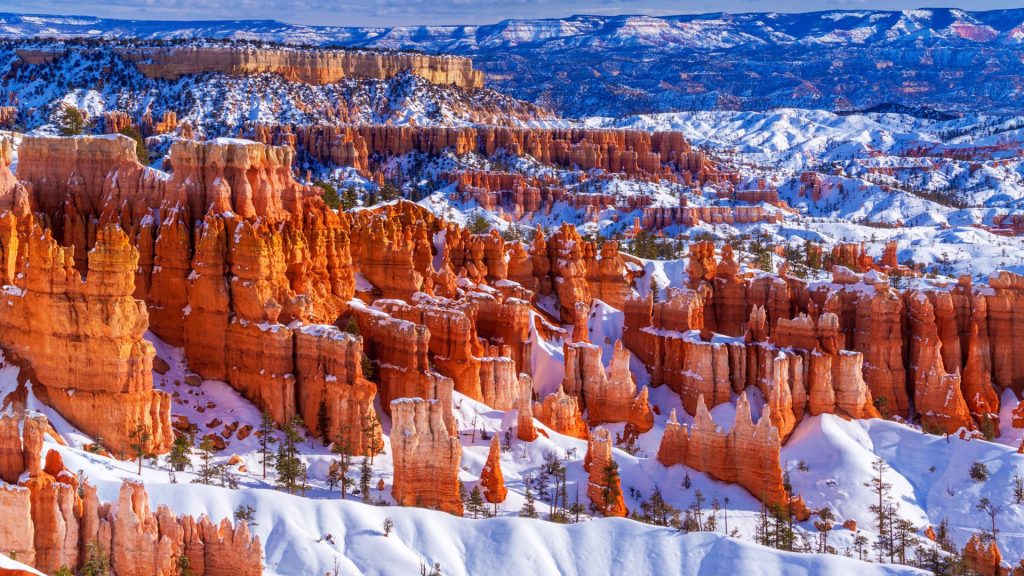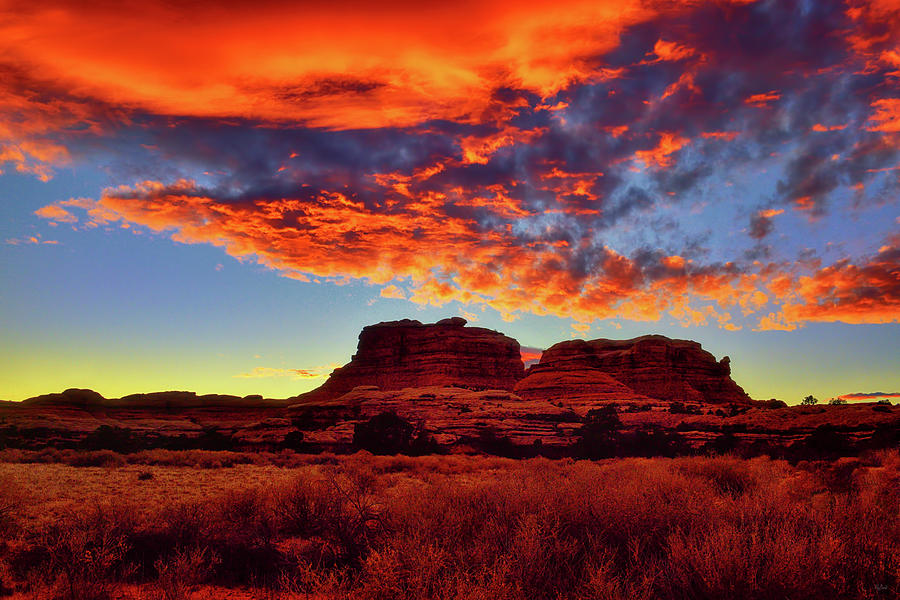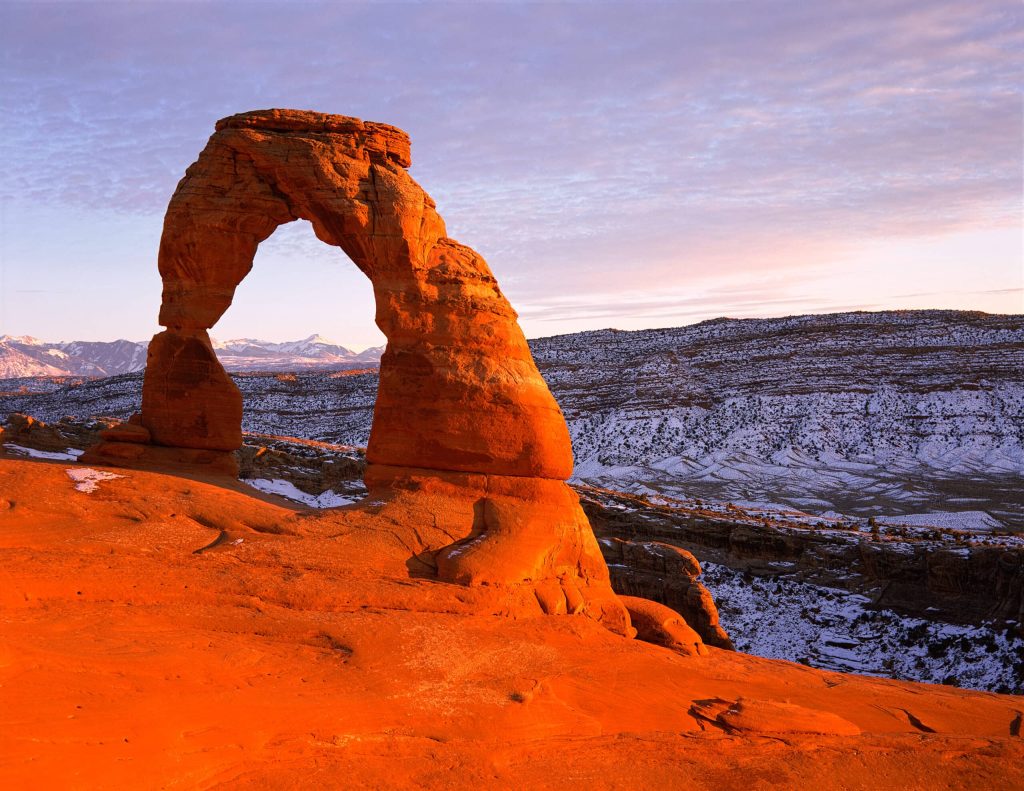The United States has 63 amazing national parks but one cannot deny the fact that Utah’s Mighty Five takes the top spot. The five incredible Utah national parks – Zion National Park, Bryce Canyon, Capitol Reef, Canyonlands, and Arches National Park, all together are known as “The Mighty Five.” Each of the five Utah national parks exhilarates in its own ways. The red-rock formations, rugged orange cliffs, sweeping canyons, adventurous hiking trails and the spectacular view makes each park worth a visit. If you have the time, do visit them all as they are located within a few hours’ drive of each other. Here’s everything you need to know about the national parks in Utah to maximize your experience.
Check Out These Utah National Parks
Zion National Park
Utah’s oldest national park, Zion, is located in the southwestern corner of Utah near the Nevada and Arizona borders. What started out as Mukuntuweap National Monument in 1909 went on to become a national park in 1919. Zion Canyon drive takes you through forest trails along the Virgin River through its array of vast and narrow canyons. The famous scenic driving tour through dramatic surroundings makes this park the favourite national park in America. The highlight of Zion National Park is an expansive red cliff canyon which is about 2,000 feet deep. It’s the world’s best place for canyoneering and is also known for some of the iconic hiking trails. This hauntingly beautiful place is a treasure of the West.

Best Known For Red canyons, Canyoneering and Majestic Mountains
Best Time to Visit: Late spring and early summer
Entry Fee: Private Vehicle: $35, Two Wheeler: $30, Walk: $20, Zion Annual Pass: $70
Things to Do: Hike Angels Landing, Emerald Pools, and Virgin River, and Walk the paved Pa’rus Trail and the River Access Trails. Check out the Observation Point, Weeping Rock and Canyon Overlook
Bryce Canyon National Park
Bryce Canyon is not a single canyon, it’s a series of natural amphitheatres carved into the edge of a high plateau. The formation of irregularly eroded spires of massive rocks called hoodoos will leave every visitor speechless. It’s a great destination for any type of visitor. Be it for hiking, backcountry exploring or just taking in the views of its unique landscape, Bryce Canyon has something to offer for all. Standing at an elevation of 8,000 to 9,000 feet, this place tends to get very cold during winters. Winter is the perfect time to visit Bryce Canyon to see the magnificent red rock hoodoos pop out of the fresh dust of snow. Wildlife in Utah national parks (Bryce Canyon) is great as its home to dozens of species of mammals and birds. Bryce Canyon National Park is one of the most beautiful Utah national parks that one can visit.

Best Known For: Thousands of Hoodoos, Bizarre Rock Formation and Sandstone Pillars
Best Time to Visit: Late spring and early winter
Entry Fee: Private Vehicle: $35, Valid for seven days
Things to Do: Sunrise and Sunset Point, Red Canyons, Park Tour, Navajo Trail and Queen’s Garden
Also Read: Interesting Fun Facts About Utah That Every Travel Enthusiast Should Know
Capitol Reef National Park
Capitol Reef National Park is the lesser-known of the 5 National Parks in Utah. This hidden treasure is located in the centre of southern Utah. The white domes of Navajo Sandstone resemble the dome of the Capitol building in Washington, hence the name Capitol Reef National Park. Unlike Utah’s Zion and Bryce Canyon National park, Capitol Reef requires some driving to get around. It’s the cutest of the lot but does not attract many visitors because there aren’t many hiking trails or attractions. That doesn’t mean it’s not worth visiting. The colorful sandstone cliffs, canyons, domes and soaring monoliths make it worth the visit.

Best Known For: Sandstone cliffs, Arches, Slot Canyons and White Domes
Best Time to Visit: Summer and spring
Entry Fee: $15 for vehicles, by foot $10, Scenic drives $20, but it’s free to drive through the park on Highway 24
Things to Do: Hike Hickman Bridge, Take the Scenic Drive, Visit Goosenecks, Sunset point, Chimney Rock and Panorama
Canyonlands National Park
Canyonlands National Park is the largest of all the Utah national parks that are spread over 527.5 square miles. It’s so big that this national park is divided into three different sections: Island in the Sky, The Needles, and The Maze. Each section is highlighted by its own unique characteristics and invites you to explore its countless canyons, mesas, arches and fantastically formed buttes. If you want to visit more than one section of the park, self-driving is the best option. The Colorado River and its tributaries have had a major hand in designing this natural beauty. The great Horseshoe Canyon was added to the Canyonlands National Park in 1971 but is geographically separate. This one-of-a-kind Utah national park offers different opportunities for sightseeing and a lifetime of exploration.

Best Known For Deep Canyons, Beautiful Rivers, Towering Mesas, Sandstone Cliffs and Pinnacles
Best Time to Visit: Winter, Late Spring, Early Summer
Entry Fee: $30 Vehicle, $25 Motorcycle
Things to Do: Sunrise at Mesa Arch, Green river overlook, Horseshoe Canyon, Pack Rafting and Paddle Boarding
Arches National Park
Coming up next is the last of the Mighty 5 Utah national parks. Located just 5 miles north of Moab, Arches National Park is one of the most accessible of the lot. With over 2,000 arches, this national park gives you a feel like escaping to a wonderland of ancient sandstone. The park’s 76,518 acres has an astounding variety of geological formations like, colossal sandstone fins, massive balanced rocks, soaring towers and hoodoos. Driving to the top of the plateau through the vibrant reds and oranges of the red rocks are breathtakingly beautiful. This red-rock wonderland over the dramatic horizons is sure to amaze you.

Best Known For: Natural Stone Arches
Best Time to Visit: Spring or winter
Entry Fee: $30 per private vehicle
Things to Do: Delicate Arch, Devil’s Garden, Sand Dune Arch, Double Arch and 4 x 4 Adventures
What To Do And What Not To Do When At Utah National Parks
– As Utah National Parks are popular it tends to get crowded towards the latter part of the day. Start your day early to avoid crowds.
– Utah gets very hot during summer and dry desert air can quickly lead to dehydration. Carry plenty of water to keep yourself hydrated.
– Food is not available in the park so carry whatever is required for your family and your group that will last through the day.
– Purchase an annual pass that gives access to all the five parks. This will work out cheaper than buying individual tickets.
– Plan your entire trip in advance, this is sure to save a lot of your time and money.
– Don’t take any natural objects from ruins, pluck on plants or indulge in tree carvings, rock etchings and spray painting as they are all illegal and can land you in trouble.
– Always stay with the group, do not travel off course.
– Fill up your gas tank before leaving in the morning as most of the drives are going to be long.
– If staying overnight, do follow all camping rules and regulations. A single wrong step can cause grave injury or danger to life.
– Download trail maps or Google Maps for offline use as there are many places where you probably won’t have cell phone service.
– Do not disturb trail markers or add new ones, as they could mislead other hikers.
– Be cautious when driving on the five Utah national parks roads as some are super rocky, some are super rutted, and some may have deep sand.
– Dress appropriately – use sturdy footwear, and layers of clothing and apply sun protection.
– Be a responsible and mindful photographer. Walking, and climbing in dangerous spaces even for a quick photo is not permitted.
– Do not litter, carry all the trash back with you as it’s not good for the wildlife and for the environment.
Each of Utah’s national parks is unique and offers something different, be it hiking Angels Landing in Zion, gazing across a wonderland at Bryce Canyon, exploring the water fold at Capitol Reef, watching the sunrise at Mesa Arch In Canyonlands or catching the sunset at the Arches National Park, they’re all worth visiting. There’s a lot to do and see in this surreal and magical place. Now that you know them all it’s time to plan for an ultimate trip to the top national parks of Utah. Do let us know which one is your favourite in the comment box below.
This 74 miles long drive takes approximately 1 hour and 15 minutes on US-89
Although one can see Bryce and Zion in one day it is highly recommended to spend a day at each of the parks as they have great hiking trails.
Not just Zion National Park but all five Utah national parks are worth the visit.
Its unique basin topography, high elevation, and dry climate make Bryce Canyon cooler than any other Utah national park.
Southern Utah is the hottest of them all with temperatures touching around 100-110 degrees in the month of July.
Anything between 10 to 12 days is good enough to see all national parks in Utah State.
Moab for Arches and Canyonlands, Kanab for Bryce and Zions and Torrey for Capitol Reef.
First and second day at Zion, third day at Bryce Canyon, fourth and fifth at Canyonlands, sixth at Arches and finish with Capitol Reef.